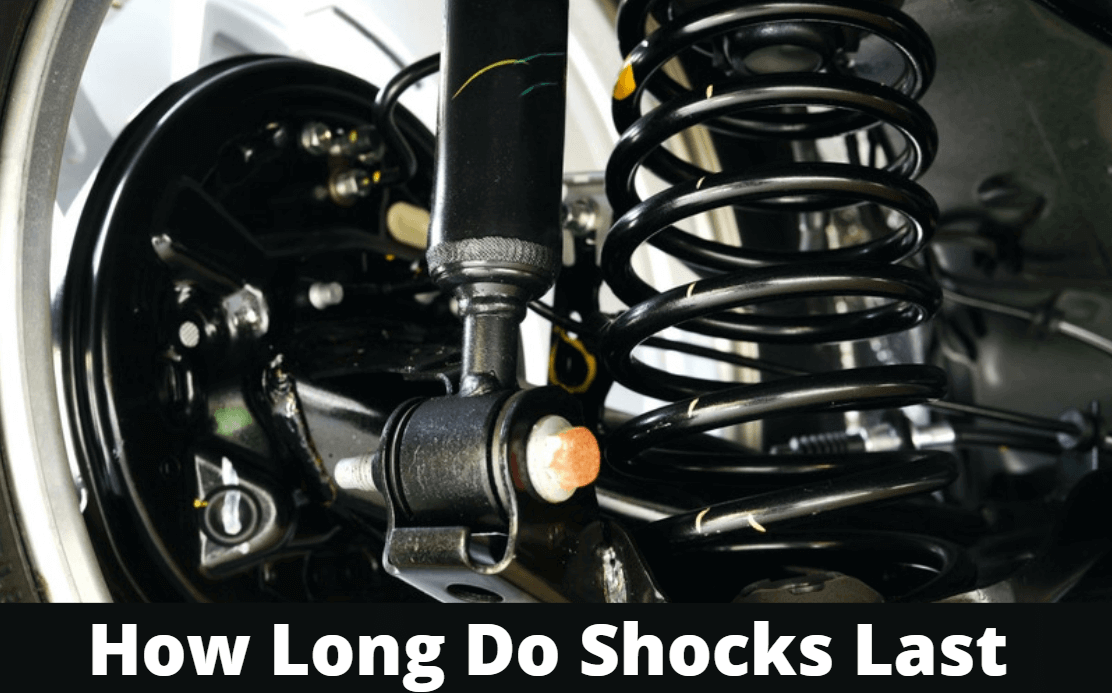Your car has various components that work together to reduce your car-bouncing and protect from a dangerous accident. A shock absorber is that kind of part that plays a vital role in absorbing unwanted shock from your vehicle.
Now, the thing is shock absorber is not a permanent thing. It can be worn out or need replacement. So, the question is, how long do the shocks last?
This writing is all about the longevity of Shock absorber and the replacement time. Check further if you have a query regarding this question.
What A Shock Absorber For?
The shock absorber or Snubber helps to control the excessive up-and-down motion of a spring-mounted vehicle. The springs act between the axis and the body. It reduces the shocks produced by a rough road surface, but it alone cannot handle bump and incision.
Inventors design shock absorber as a device that can stop or slow down the force to control the springs’ compassion and stretch. And hopefully, the shock absorber does its job; it reduces spring bouncing through the dampening process and transforms the spring’s kinetic energy into thermal energy. Then, dampers’ hydraulic fluid dissipates the heat and controls the bounce.
You know, excessive spring movement can cause you to lose your vehicle’s control, and if you hit a deep pothole, it can also damage your tire’s sidewall. But using a shock absorber in your vehicle will help you to ride safely and comfortably.
A shock absorber creates a force that opposes the springs’ contraction and stretching and keeps the car maneuverable in any road conditions.
How long do shocks last?
Shock absorbers help to soften the ride, but it cannot always give your car the same protection. So, you need to know how many miles do shock absorber last? Though there’s no obvious answer to the question, experts estimate that shocks’ service life is between 50,000 to 100,000-miles; you may find some warning signs in the shock absorber.
But some factors depend on your vehicle shock absorber’s longevity, like where you drive or what is your ride quality. Speed bumps on rough roads, crossing the limit of load capacity can shorten the longevity of the road shocks absorber.
Again, the weather condition is another factor, like if you live in a wet climate, then your shocks may wear out faster due to the corrosion of road salt. Stop-and-go traffic can be a reason for worn shocks. Now, come to another question that what is the average life of a shock absorber? On average, it can be 4 to 5 years, at least. If you can avoid the hustle and bustle of city streets, then shocks may last longer.
Do Shocks Go Bad With Age?
Yes, a shock goes bad with age, but if you keep maintaining air shocks, it can perform very well in the long run. Anything that is under pressure will tend to become depressurized over time.
What Are The Signs Of Bad Shocks?
Here, we have given some signs of bad shock absorbers:
- Bumpy ride: Worn out shocks can make your car’s springs bounce up and down more than what is considered normal, and your vehicle never feels stable on the road. Driving over bumps will be so uncomfortable.
- Irritating noise: the loose or worn shock absorber can create a clunking or banging noise while going over bumps.
- Fluid leaks: If a hydraulic fluid leak happens to the exterior of the shock, it is a sign that seals have broken, and the internal fluids essential are not functioning properly.
- Irregular tire wear: Bad shocks can cause unusual tire wear. For this reason, the tire often develops high and low spots in the tread.
- Reduced handling and braking ability: Bad shocks can negatively affect your car’s handling and braking characteristics.
How Often Do Shocks Need To Be Replaced?
You may want to know when the air shocks need to be replaced, here we have listed some points.
Bumpy roads: You should check whether you are experiencing a bumpy ride or not. If you find any bumpiness or shakiness while driving, then it is time for replacing rear shocks.
Steering Problems: One of the important signs is poor steering wheel response. The stiff steering wheel is hard to turn and causes unusual noises when turning wheel.
Braking Issues: Unstable braking performance in the original shock absorber is another issue. It produces a “nose-diving” sensation as well as instability while braking.
Fluid leaks in Damaged Shocks: Fluid leaks in shocks are common when a car needs replacements. Mounts and bushings can also become corrupted or damaged as time goes on.
Unusual Tires: If you notice unusual tire wear patterns, it may be time to replace your shocks.
Mileage: After fifty thousand miles marker, you might consider having your suspension checked if you notice any problems in the mileage checkpoint.
FAQs
How long do shocks last on a truck?
Every 50,000 to 100,000 mileage.
How long do shocks last in a car?
Experts estimate 50,000 miles, but you should check out whether it needs replacement or not.
How long do shocks last on a semi-truck?
It’s recommended to check a semi truck’s shock every 12,000 miles and should be replaced at 100,000 miles.
Do I need to replace all 4 shocks at once?
There are two scenarios like you can replace one pair of shocks at one time, or if you want, you can replace all 4 shocks simultaneously.
What noise do bad shocks make?
Ball joints and control arms in bad condition cause squeaking and groaning sounds.
Do shocks go bad from sitting?
No, but if sitting is unused, it may not go well.
Conclusion
After reading this article, you may understand how long the shocks last or when it needs to be replaced. You may now become conscious about the shock absorber that is an essential component of your vehicle. So, keep observing when your device requires replacement.

